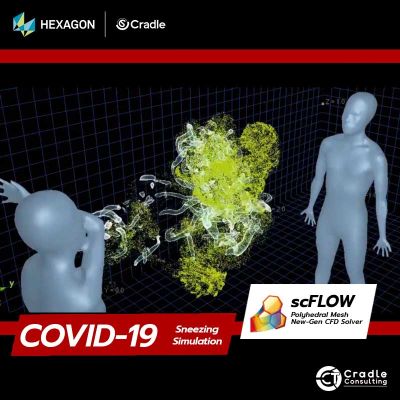
Overview
In the past, this involved a costly and lengthy process of trial and error, but today, the use of electronic forming systems (ESI) for sheet metal forms takes the need for physical prototyping out of the equation and delivers high-quality solutions faster. ESI is the most advanced form of metal forming software available today. This is because it enables engineers to design and optimize metal molds without having to carry out costly physical test loops.
The application covers the full range of processes, including forming metal molds, sheets, and metal parts, from cutting and patching blanks to manufacturing metal parts such as parts and components.
The application covers the full range of processes, including forming metal molds, sheets, and metal parts, from cutting and patching blanks to manufacturing metal parts such as parts and components.

Initial Configuration of a Blank in Sheet Metal Forming Simulation
Automobile manufacturers and their suppliers, for example, manufacture parts using the most commonly used sheet metal forming processes. The present invention generally concerns the system and methods of sheet metal forming and the ability to numerically simulate the initial configuration of sheets. Drawing, shaping, punching, etc. refers to a series of systems or methods used for sheet metal forming. These have been used in the industry for years to manufacture metal parts from sheet metal.
The exemplary drawing and embossing are shown in FIG. The mechanical properties of the material are given in Table 1, and the sheet thickness is 0.7 mm. Steel (WSS M-1A365A12) is punched with a thickness of 1.5 mm or a diameter of 2.2 mm.
The exemplary drawing and embossing are shown in FIG. The mechanical properties of the material are given in Table 1, and the sheet thickness is 0.7 mm. Steel (WSS M-1A365A12) is punched with a thickness of 1.5 mm or a diameter of 2.2 mm.

Process Simulation and Die-Design in Sheet Metal Forming
One of the most important process parameters influencing the forming performance is the die, and its factors are designed using orthogonal experiment factors. Orthogenic experiments are construction methods that investigate the mechanical properties of a material often used for stamping automotive cladding.
In the last 10-15 years, the use of computer-aided process modeling (CAM) for sheet metal forming has become one of the most important areas of research in the field of sheet metal forming. This emerging role is also strongly emphasized by the rapid development of finite-element modeling.
In this paper, we will present an integrated process simulation and tool design system for sheet metal forming developed by the Faculty of Mechanical Engineering of Miskolc University. This foundation describes the use of computerized process modeling (CAM) and finite element modeling (FEM) in sheet metal forming, and their use in their simulation has greatly influenced the development of new materials, material design, and application of these technologies in sheet metal forming over the past decade.
Today, the punching industry is facing global competition driven by the demand for high-quality, cost-effective sheet metal materials and the need for efficient and efficient process simulation.
In the last 10-15 years, the use of computer-aided process modeling (CAM) for sheet metal forming has become one of the most important areas of research in the field of sheet metal forming. This emerging role is also strongly emphasized by the rapid development of finite-element modeling.
In this paper, we will present an integrated process simulation and tool design system for sheet metal forming developed by the Faculty of Mechanical Engineering of Miskolc University. This foundation describes the use of computerized process modeling (CAM) and finite element modeling (FEM) in sheet metal forming, and their use in their simulation has greatly influenced the development of new materials, material design, and application of these technologies in sheet metal forming over the past decade.
Today, the punching industry is facing global competition driven by the demand for high-quality, cost-effective sheet metal materials and the need for efficient and efficient process simulation.

Sheet Metal Forming Simulation
The formability of possible defects in one part can be analyzed with simulations that provide a reliable basis for nozzle debugging, as this can reduce the problems of nozzle manufacturing, shorten the production cycle, save production costs and offer more economic benefits to the company. Many scientists have conducted extensive research on the role of process simulation in the design and production of sheet metal parts. In this paper, automotive low-floor panels are used as a research object to investigate several process parameters that have an important impact on the forming quality of the part, from the forming process to automotive panels that have an important impact on its quality.
Today, the metal forming industry increasingly uses simulations to evaluate the performance of tooling processes and blanks prior to construction trials. Simulations of the forming process mainly include the definition of forming tools, the setting of process parameters, and the analysis of the results.
Traditionally, the development of a metal forming process has been a lengthy process of testing and error, requiring the creation and modification of physical prototypes. After the construction of an experimental tool to verify the ability to manufacture a part of the required quality, there are punches and tools designed to successfully manufacture the part. Eventually, the tolerances can no longer be maintained and the structure has to be formed much deeper.
Today, the metal forming industry increasingly uses simulations to evaluate the performance of tooling processes and blanks prior to construction trials. Simulations of the forming process mainly include the definition of forming tools, the setting of process parameters, and the analysis of the results.
Traditionally, the development of a metal forming process has been a lengthy process of testing and error, requiring the creation and modification of physical prototypes. After the construction of an experimental tool to verify the ability to manufacture a part of the required quality, there are punches and tools designed to successfully manufacture the part. Eventually, the tolerances can no longer be maintained and the structure has to be formed much deeper.
Overall
The traditional development of a forming process has been replaced by computer simulations. For example, the time-consuming creation and modification of physical prototypes are replaced by the manipulation of the physical structure of the metal and its properties such as thickness, thickness, and shape. Forming process simulations are carried out in several stages and phases, and simulations can significantly shorten the time to market.
Cited Source
References
- https://www.esi-group.com/software-solutions/virtual-manufacturing/sheet-metal-forming/metal-forming-simulation 0
- https://patents.google.com/patent/US20130041634A1/en 1
- https://www.yumpu.com/en/document/view/37249378/integrated-process-simulation-and-die-design-in-sheet-metal-forming 2
- https://en.wikipedia.org/wiki/Sheet_metal_forming_simulation 3
- https://www.hindawi.com/journals/jam/2014/470320/ 4

















